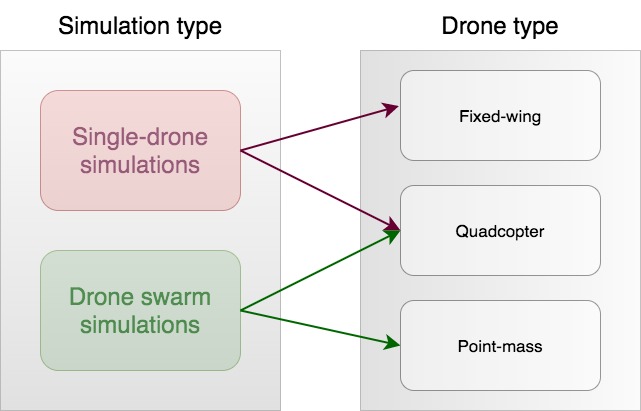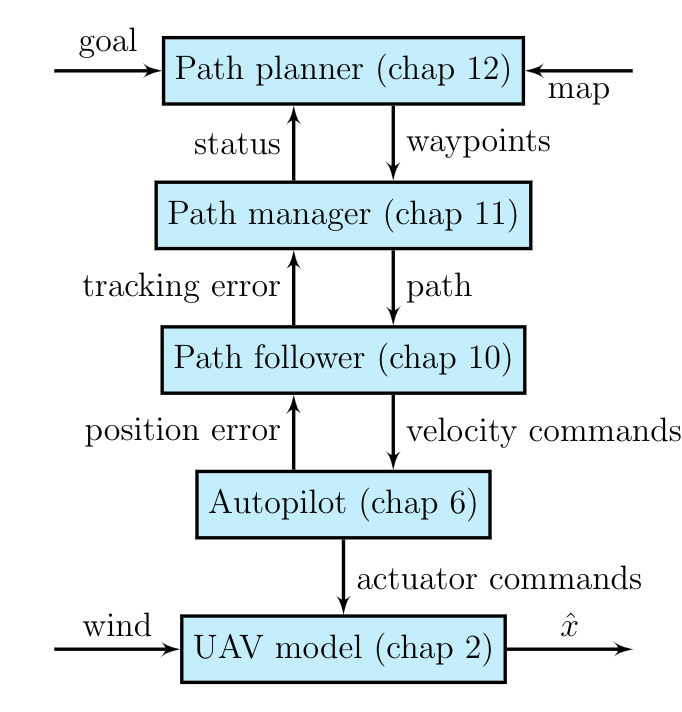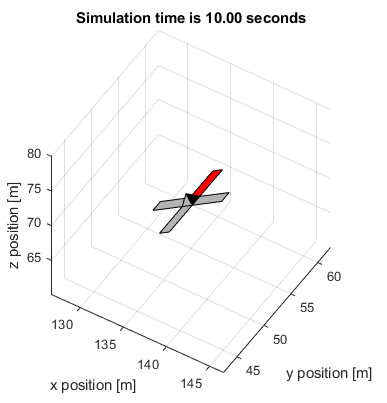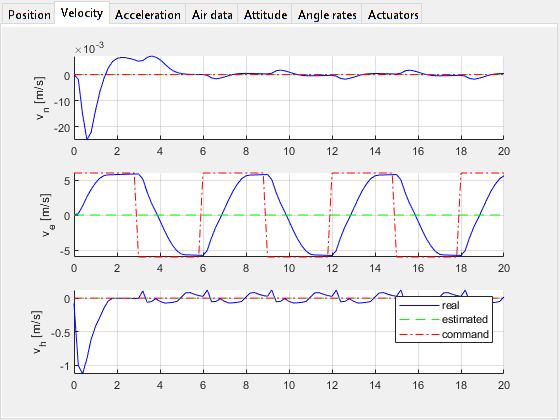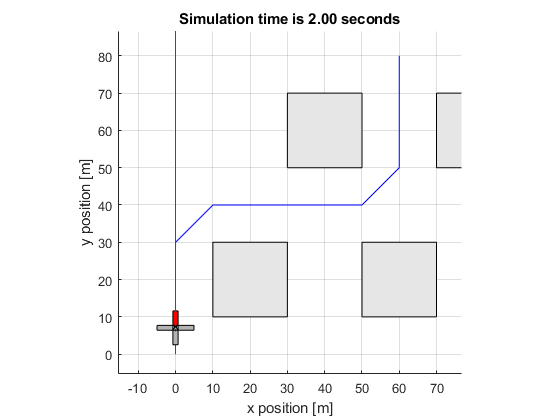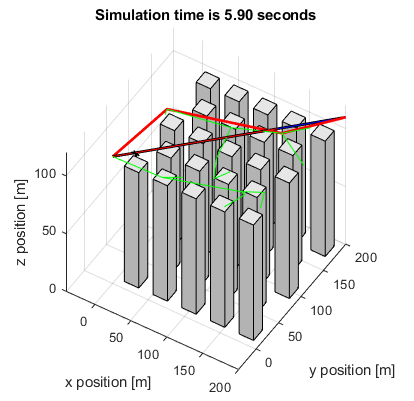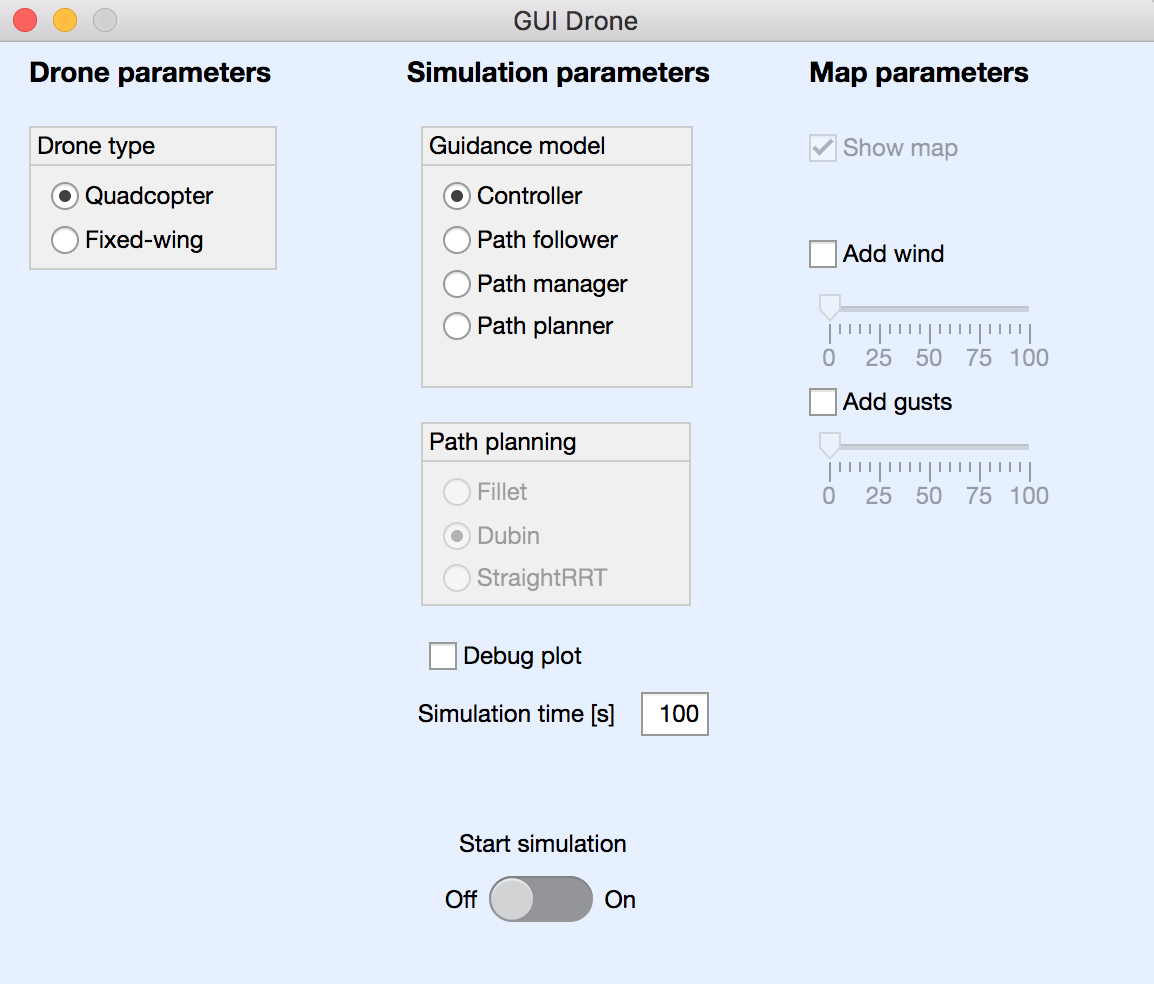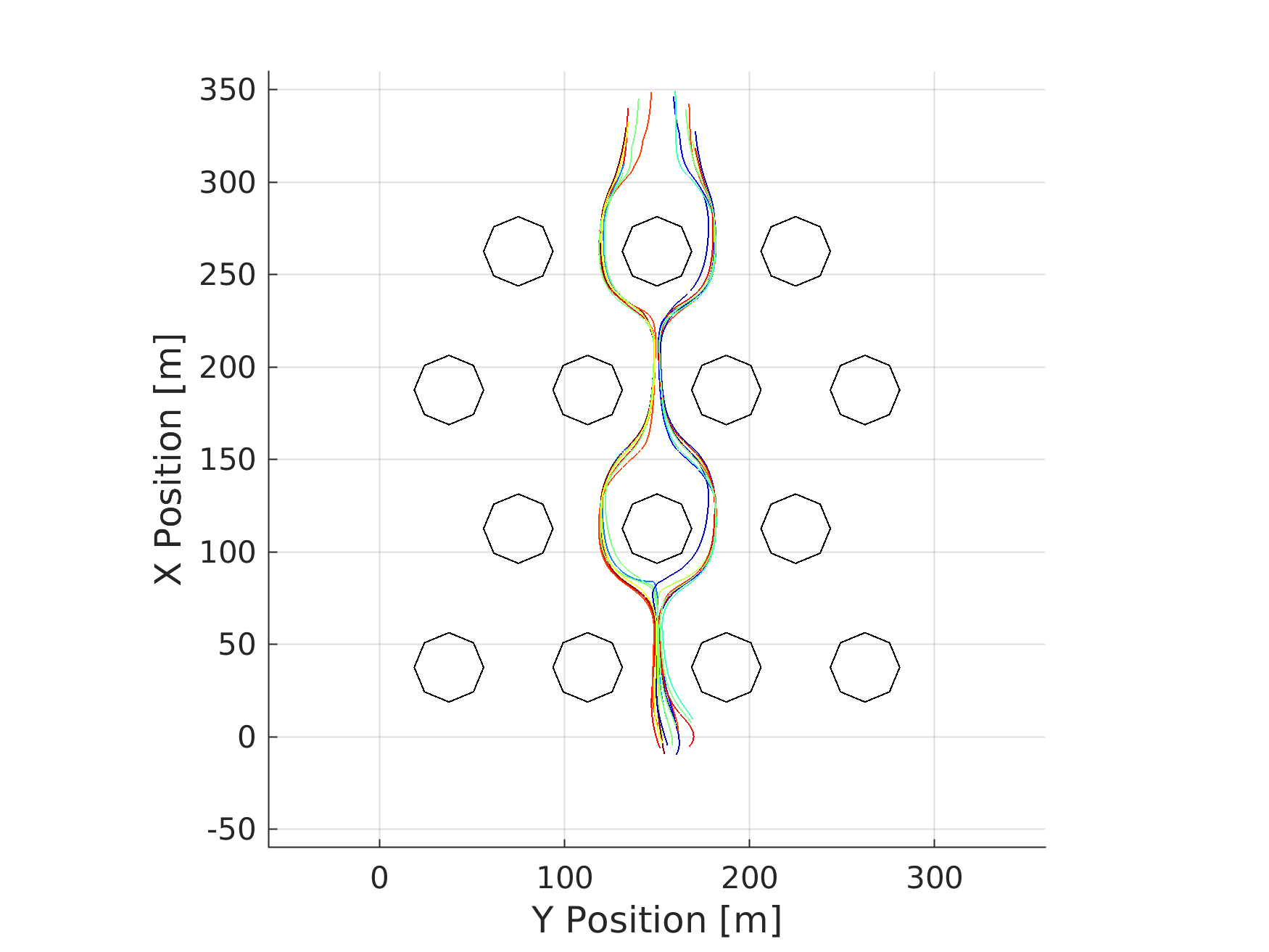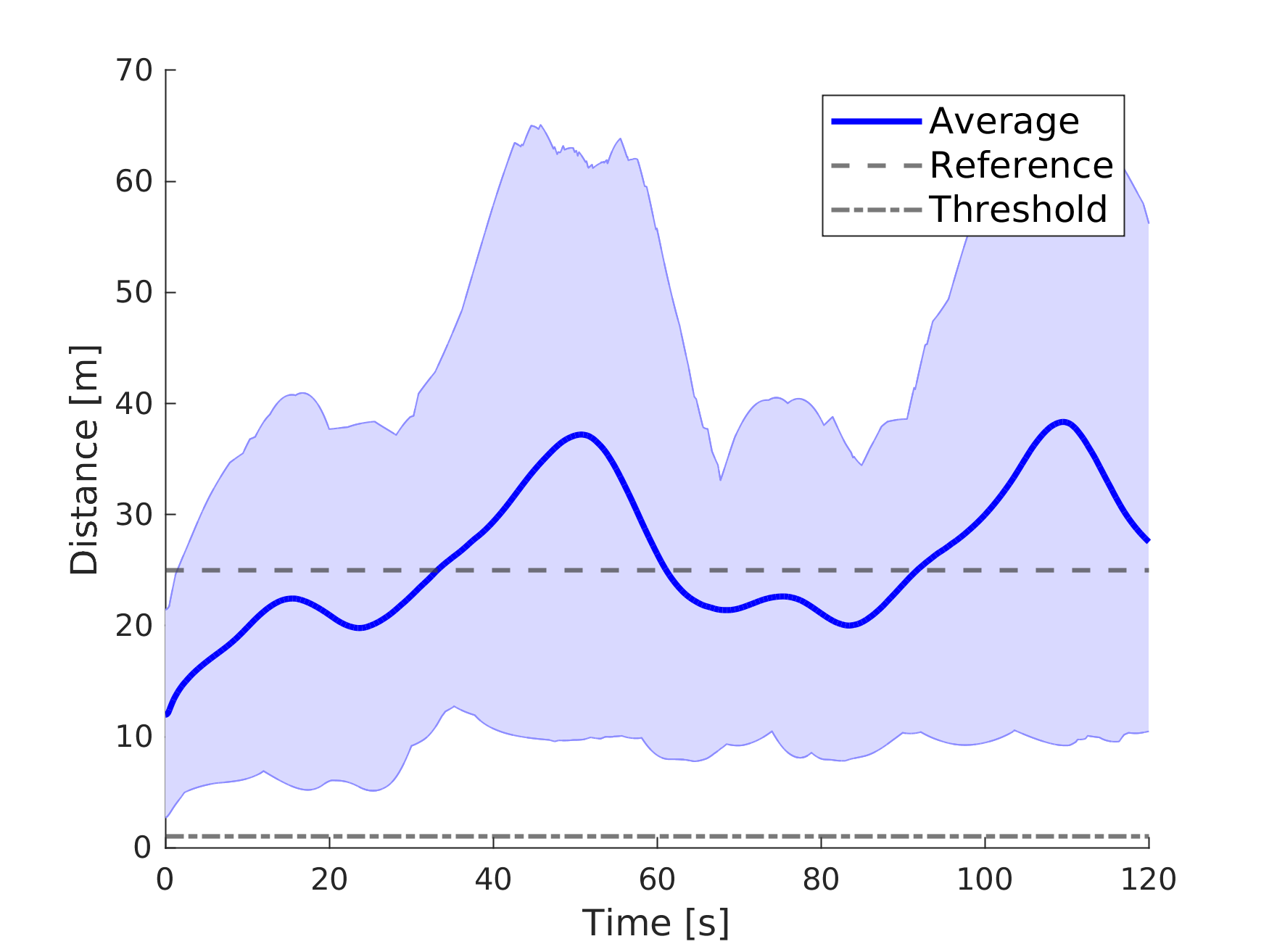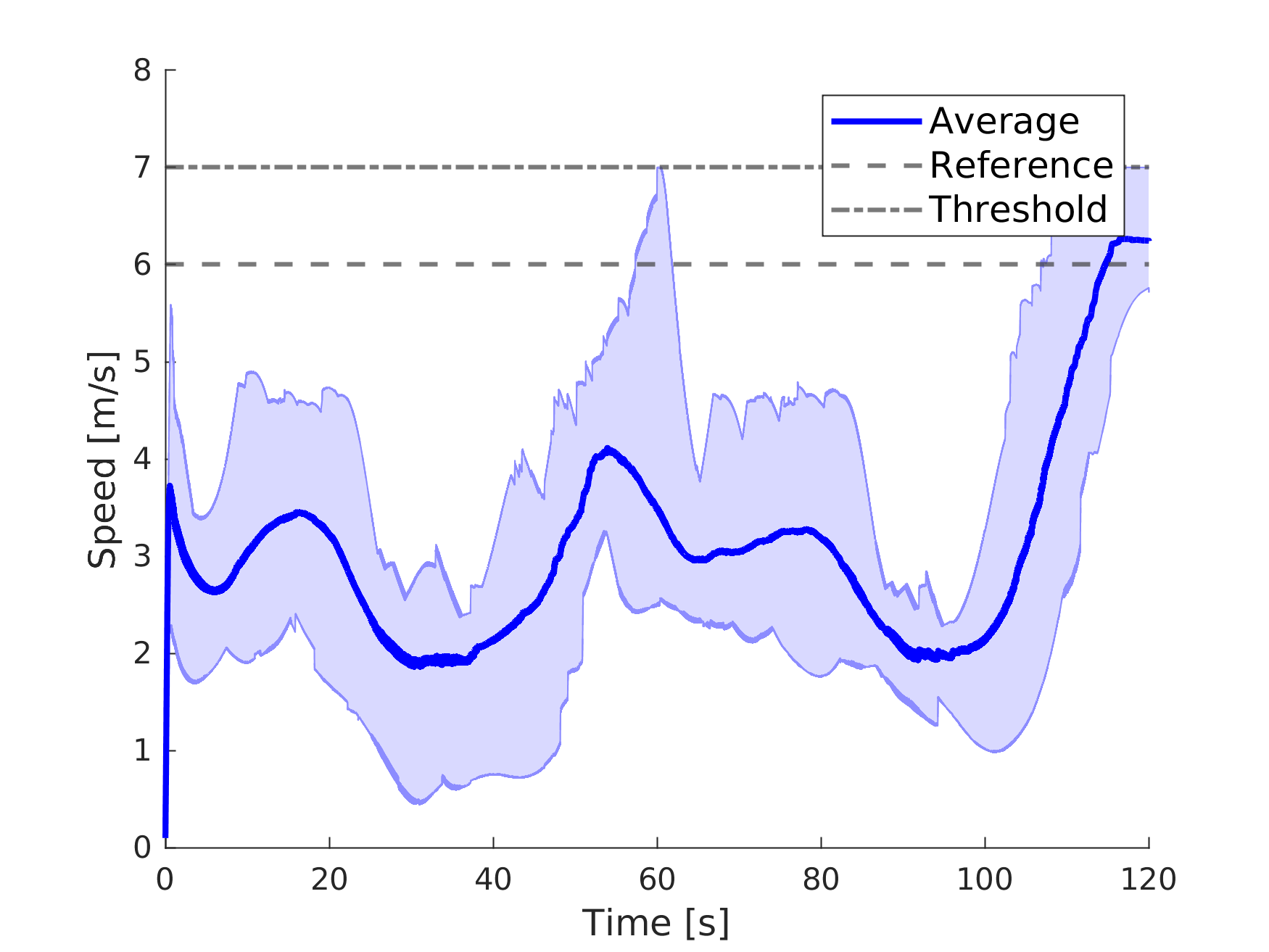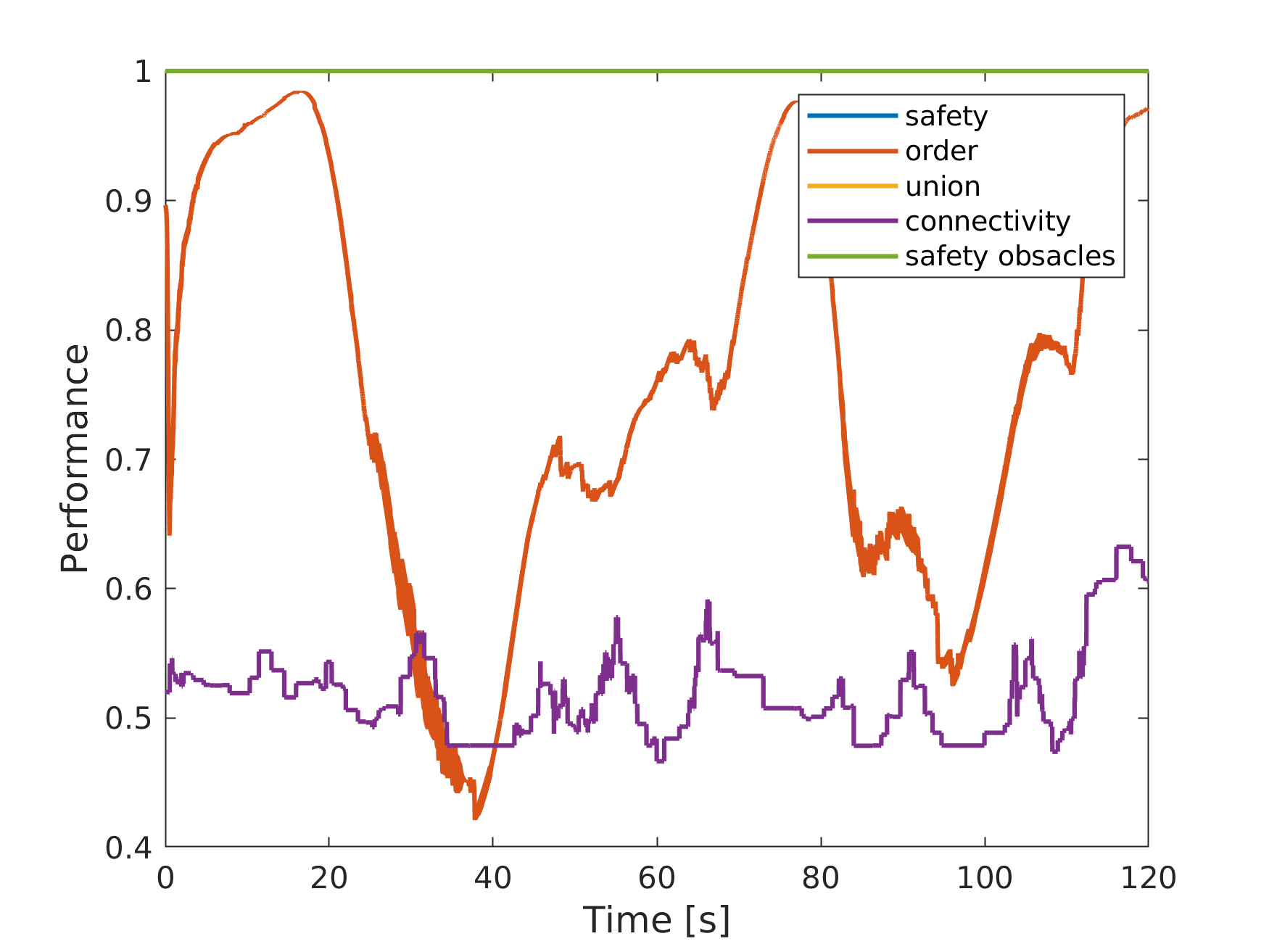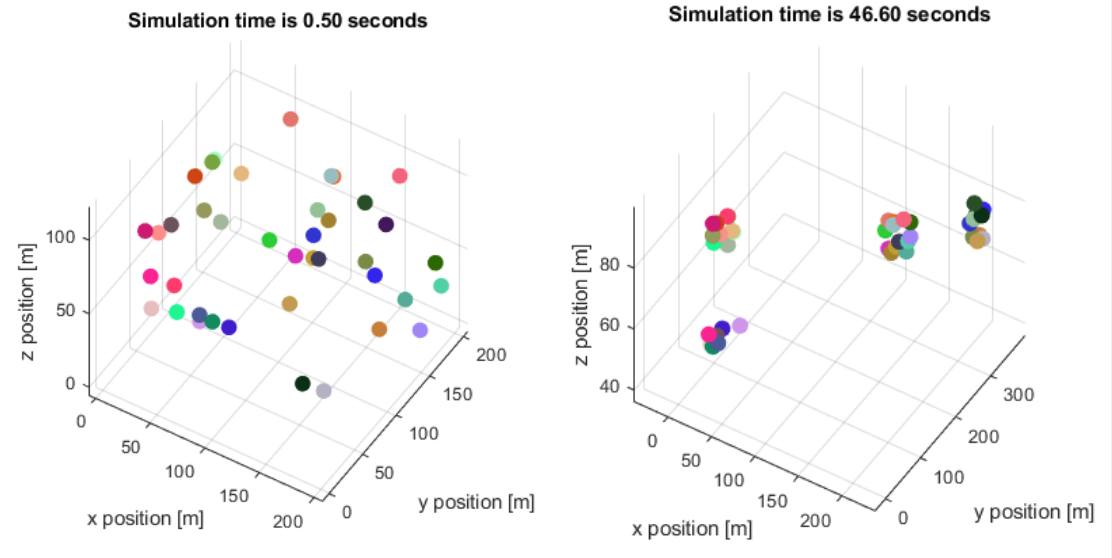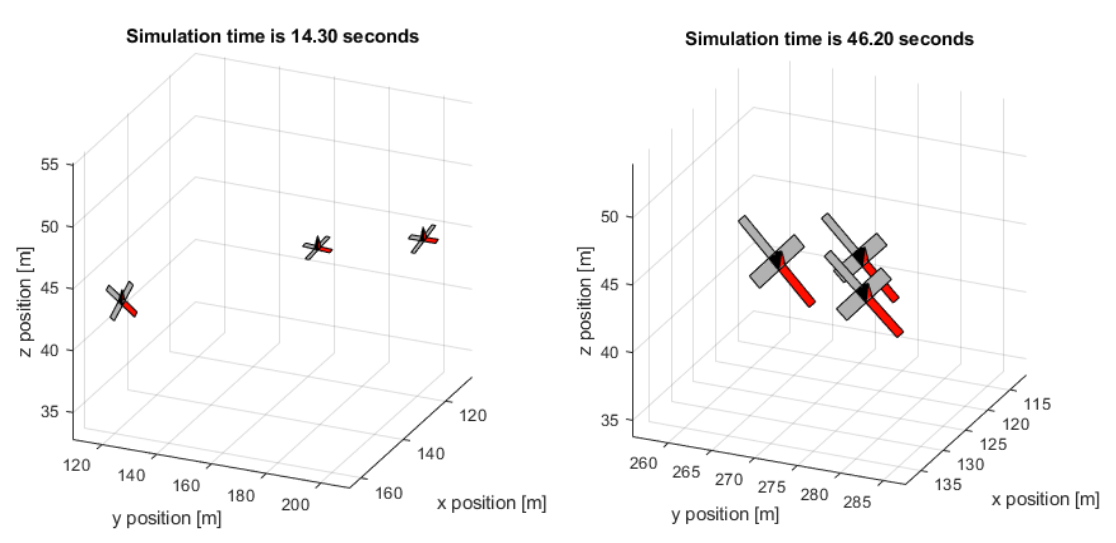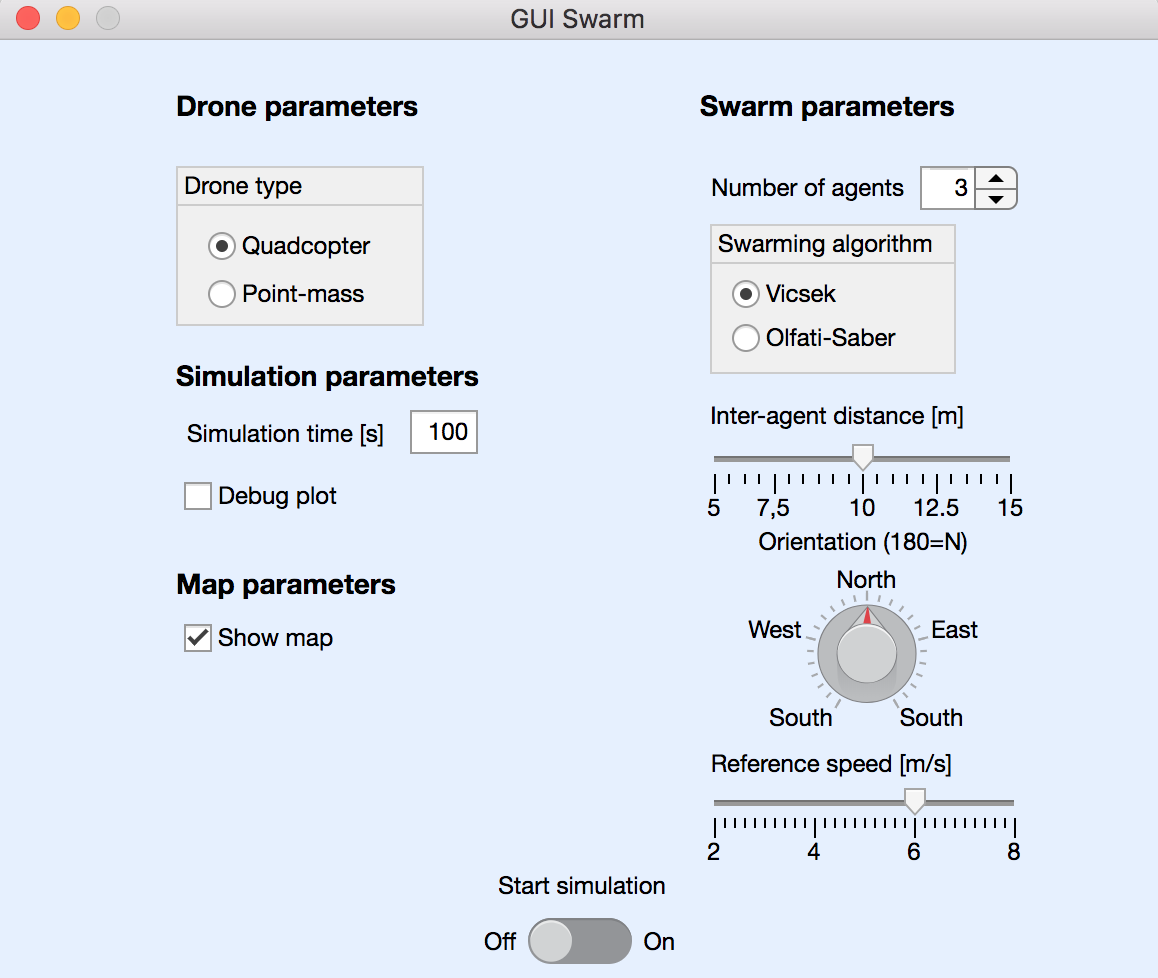SwarmLab is a drone swarm simulator written in Matlab. It aims at:
- simulating single drones;
- simulating swarms of drones;
This software is designed with versatility and scalability in mind. It allows for fast programming and easy incorporation of various modules designed for drone and drone swarm simulations. It also decreases the coding effort by offering built-in and ready-to-use functionalities. These features make this package suitable to different applications in the area of drones and swarm robotics, including fast algorithm development, training, education, and the automatic collection of simulated data.
Only Matlab installation is required with the Statistics and Machine Learning Toolbox.
Single-drone simulations exploit the architecture proposed by Professors Beard and McLain in Small unmanned aircraft: theory and practice and illustrated below. The focus of these simulations is realism. Their code is available here. Two drone-types are supported: quadcopter and fixed-wing drones.
The graphical tools supported for single drone simulations are:
- 3D drone viewer
- state variable plotter
The following examples are provided:
- controller
- path follower
- path manager
- path planner
For ease of use, single-drone simulations can also be run from a dedicated GUI, that allows to change a selection of parameters, e.g. drone type, simulation type, debugging plots, simulation time.
Drone swarm simulations exploit either the Olfati-Saber or the Vicsek (Vásárhelyi’s version) algorithms. The focus of these simulations is the behaviour of the group of drones, as a result of interactions among individuals. In this case, quadcopter and point-mass (featuring no vehicle dynamics) are supported. The latter can be used when computational time requirements prevail over simulation realism, or when the interest relies in the pure collective behavior, independently on the agents' dyanamics.
The graphical tools supported for drone swarm simulations are:
- run-time 3D swarm viewer
- run-time state variable plotter
- offline 3D swarm viewer with wakes
- offline state variable plotter
- offline performance analyser
The following examples are provided:
- Olfati Saber's swarming algorithm
- Vasarhelyi's version swarming algorithm
The following illustrations represent:
- a swarm of 5 drones with quadcopter dynamics,
- a swarm of 25 drones with point mass dynamics before and after convergence to the equilibrium configuration.
Also drone-swarm simulations can be run from a dedicated GUI. In this case, parameters that can be set are: drone types, simulation time, debug plotting, map plotting, number of agents of the swarm, swarming algorithm, preferred inter-agent distance, preferred orientation, preferred speed. The GUI allows for run-time changes of some parameters, such as the swarm direction.

